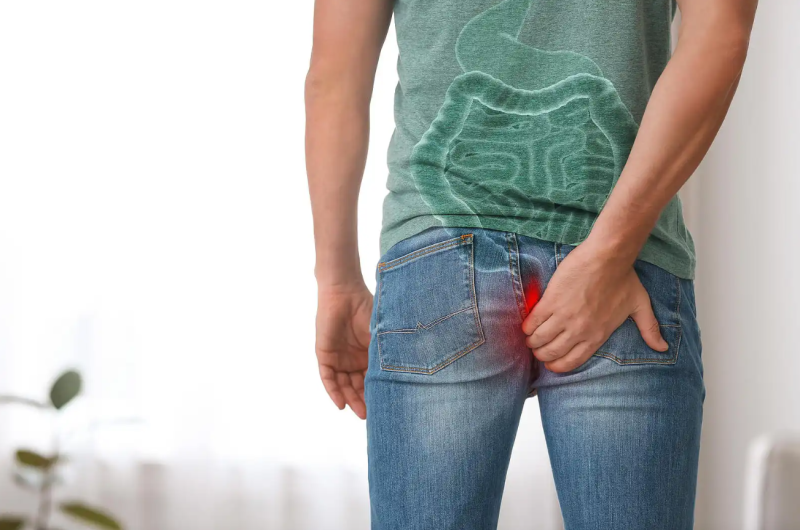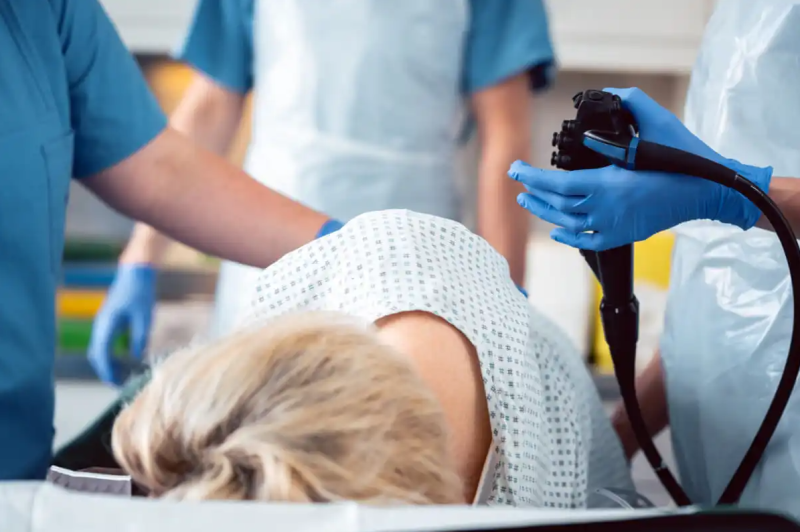
The anus is one of the body’s most delicate and sensitive areas. For this reason, injuries, lumps, and wounds at this level usually cause discomfort in most people. Next, we will tell you 11 possible causes of the appearance of a small ball in the anus.
Several reasons can explain the presence of a small lump, abscess, or ball in the anus. They are usually palpable around the anal sphincter and are accompanied by a sensation of rectal occupation and discomfort when defecating. In the same way, the presence of pain, itching, and even bleeding is familiar.
The delay in diagnosing anal affection is frequent, motivated by the shame and fear of many people. However, most of the lumps that appear in the anal region can be cured effectively.
Contents
Causes of a lump in the anus
Perianal lumps are classified as benign and malignant. In general, these indicate that something is not right in the body. Fortunately, most have medical treatment.
1. Hemorrhoids
Hemorrhoids are the most common cause of a lump or nodule in the anus. They result from pathological dilation of the veins in the anus and the lower part of the rectum. Studies, such as those published by the Revista Mexicana de Coloproctologia, estimate that more than 50% of adults over 40 suffer from them.
Similarly, hemorrhoids can be internal or external. The internal ones are rarely palpable outside the rectum. In this sense, the external ones are usually felt in the skin surrounding the anus and are accompanied by itching, pain, and bleeding when evacuating.
 Family history and chronic constipation are the main risk factors for hemorrhoids. As the pharmacists Olga de Conte and Cristina Battle point out in their article, professionals recommend increasing the intake of fiber-rich foods and drinking plenty of water during the day. In addition, sitz baths with warm water are also helpful.
Family history and chronic constipation are the main risk factors for hemorrhoids. As the pharmacists Olga de Conte and Cristina Battle point out in their article, professionals recommend increasing the intake of fiber-rich foods and drinking plenty of water during the day. In addition, sitz baths with warm water are also helpful.
Medical therapy is based on using creams or ointments with cortisone and lidocaine to relieve symptoms. In advanced cases, surgical measures are required to remove them.
2. Anorectal abscess
Anorectal abscesses are cavities containing purulent fluid in the anal area. The most common cause is a bacterial invasion of the glands in the area. This is another reason for the appearance of a ball or bumps around the anus.
The obstruction of the anal glands is responsible for the accumulation of pus and the production of symptoms, as endorsed by the MSD Manual. The abscess is usually located near the anal opening and feels like a small lump.
Other associated symptoms are the following:
- Anal pain that worsens with defecation.
- Fever. Irritation and redness of the area.
- The sensation of rectal occupation.
- Purulent fluid outlet.
- Difficulty evacuating.
As determined by an article endorsed in 2016 by the American Society of Colon and Rectal Surgeons, incision and drainage of the pus contained in the abscess are recommended. Some people may require a surgical approach for safer drainage. Antibiotics are used in patients with deep spots and a depressed immune system.
3. Anal fissure
An anal fissure is a tear in the skin and mucosa surrounding the anus. According to a study published by the Journal of Integral Medicine, these are usually the result of the evacuation of hard stools due to chronic constipation. In addition, trauma and the practice of anal sex without adequate lubrication are common causes.
These fissures or cracks are visible and are usually accompanied by a small soft ball or lump near the anus. The swelling is painful when the aperture has not yet healed and becomes painless when the crack heals completely.
Affected people usually manifest anal pain during and after defecation. In addition, bright red blood in the feces and on the toilet paper is frequent. Anal fissures go away after a few weeks with dietary changes and sitz baths.
As stated in an article published in 2018 by the Spanish Journal of Surgery, medical treatment includes creams with nitroglycerin to improve healing and ointments with lidocaine to relieve pain. Professionals often recommend a surgical approach for chronic fissures resistant to treatment.
4. Perianal fistula
A perianal fistula is an abnormal connection between the skin around the anus and the inner surface of the rectum. It usually originates from a surgical lesion or an infectious process.
A lump or hard ball in or near the anus is familiar in this condition. In addition, as the Spanish Society of Internal Medicine (SEMI) warns, the presence of the following symptoms is indicated:
- Continuous or intermittent discharge.
- Pain during defecation.
- Stains on underwear.
- Itching around the anus.
Surgery is not recommended in patients with Crohn’s disease and chronic diarrhea. Similarly, the person may present a fever in case of an associated infection. As suggested by an article published by the Revista del Hospital Juárez de México, it is advisable to use surgical treatment through fistulotomy medical plugs or fibrin glues.
5. Anal warts
Anal warts or condylomata acuminate are small moist nodules ( rounded masses that group cells) of a light pink or brown color that appears inside and around the anus. This condition results from infection with the human papillomavirus (HPV) through unprotected sexual contact.
Recent research, such as the following endorsed by the Journal of Infectious Diseases and Clinical Microbiology in 2019, suggests that HPV serotypes 6 and 11 are responsible for anogenital warts. These usually appear at first as small punctiform spots that later become larger.
In advanced cases, warts can cover the entire anal region and even extend to the genitals. Other symptoms include stinging, bleeding, a sensation of rectal fullness, and mucus discharge.
Anal warts must be treated promptly;lution is unpredictable and can multiply quickly. In general, treatment is based on topical medications with cidofovir and podophyllin. Some warts are removed by cryotherapy or surgical removal.
6. Molluscum contagiosum
This contagious disease affects the skin and is caused by a virus from the poxvirus family. It is characterized by small balls or bumps of pearly color, rounded, firm, and painless. It is transmitted by direct contact with affected people and through contaminated objects.
As suggested by a study carried out by several researchers at the Hospital de la Santa Creu I Sant Pau, in young adults, this disorder occurs in the genital region and around the anus as a sexually transmitted disease. In most people, this condition can resolve without treatment after several months.
The medical approach includes the topical application of medications such as cantharidin, podophyllin, podophyllotoxin, or potassium hydroxide. Similarly, more complex measures such as cryosurgery, curettage, electrodesiccation, and pulsed laser are often used.
7. Pilonidal cyst
A pilonidal cyst is a small ball around the anus and on the buttocks’ upper part containing hair and skin particles. This type of cyst usually occurs before the perforation of hair under the dermis. They can become infected and form painful bumps.
In addition, they are more frequent in men and in people who spend long periods sitting. As explained by Dr. Gamboa Pacheco, the cysts are removed through drainage and surgical removal.
8. Anorectal polyps
Anorectal polyps are abnormal formations that grow inside the anus and rectum. In most cases, these lesions are benign, although a tiny group may be precancerous, as noted in an article published in 2012 by the Revista de Gastroenterología del Perú.
